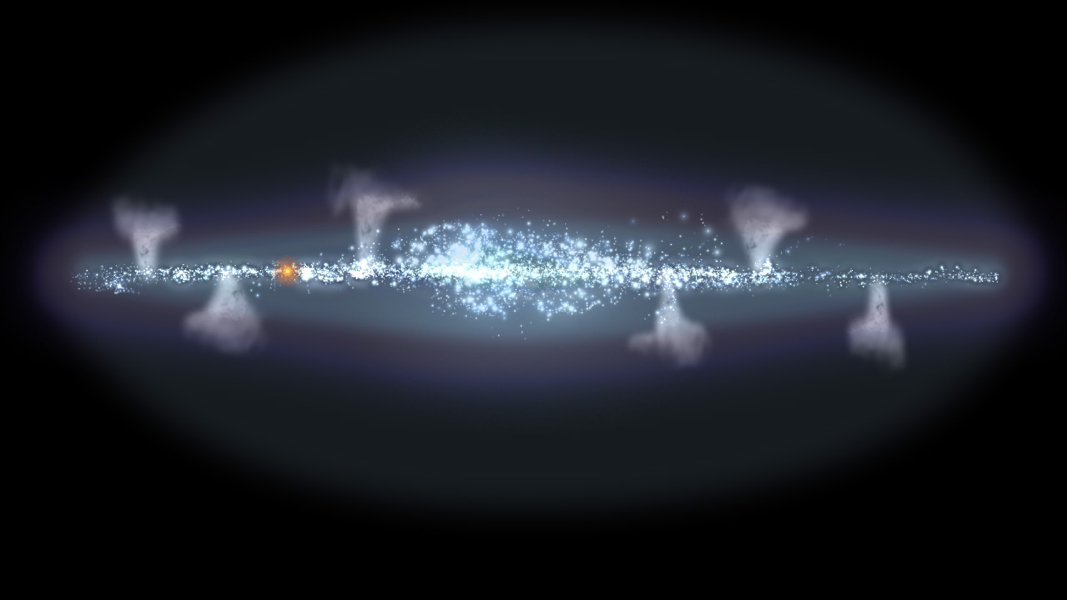
 Credit: ESA
Credit: ESA
Glowing Fountains
Galaxies are enormous recycling stations. Stars in galaxies are continuously turning simple material (hydrogen, helium) into more complex chemicals, and dispersing this stuff into space via a number of stellar mass-loss mechanisms. The most important of these mechanisms are supernova explosions. Powerful supernovae can distribute a star's stuff over enormous distances, and in some cases almost expel stellar material beyond the disk of the galaxy into the dim recesses of the inter-galactic void. The expelled material can rise out of the galaxy and, because it is heated to temperatures of millions of degrees by the supernova, it can create a halo of hot gas around galaxies. Eventually this material will radiate X-rays, grow cooler, and form clouds which fall back onto the galaxy in a sort of "Galactic Fountain", as shown in the artistic rendition above. That's the theory anyway, and though astronomers do see halos of hot gas around the Milky Way and other galaxies, it's been a matter of debate whether these halos are primarily produced by galactic fountains or some other mechanism - perhaps these halos are hot gas remnants left behind by the galaxy formation process itself. Now scientists have used observations of X-ray emission from select portions of the Milky Way's X-ray halo obtained by the XMM-Newton X-ray observatory to help uncover the origin of this hot gas. Using detailed studies and computer simulations of the X-ray data obtained by XMM-Newton, scientists have concluded that most of the hot gas they've observed is consistent with the "fountain model".
Published: December 6, 2010
<
HEA Dictionary ● Archive
● Search HEAPOW
● Other Languages
● HEAPOW on Facebook
● Download all Images
● Education ● HEAD
>

Each week the HEASARC
brings you new, exciting and beautiful images from X-ray and Gamma ray
astronomy. Check back each week and be sure to check out the HEAPOW archive!
Page Author: Dr. Michael F. Corcoran
Last modified Tuesday, 27-Feb-2024 10:06:40 EST


